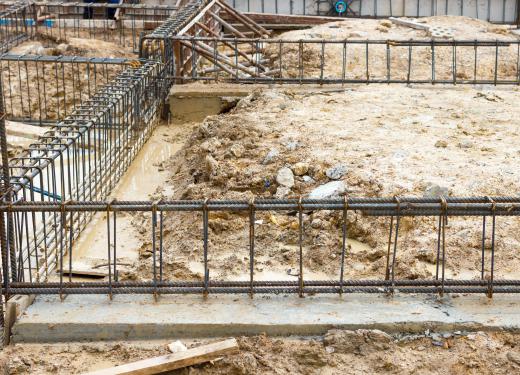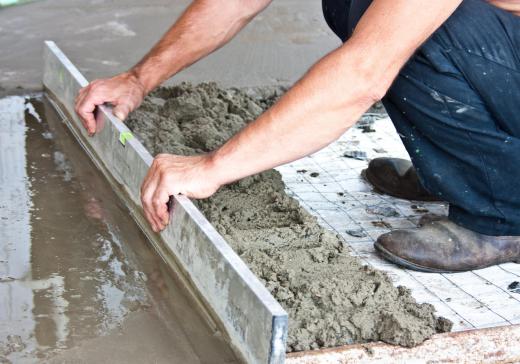Slipform is a construction technique where a set of low forms is used to start shaping walls and move the forms as they build up, allowing finished walls to emerge beneath while building material is added above. This method is available for use with masonry construction as well as solid pours of concrete and other materials. Structures like homes, retaining walls, curbs, and so forth can all be built using this technique, and it is suitable for a variety of climates and construction materials.
In solid concrete construction, slipform involves the use of a continuous pour of concrete while the workers slip the molds up. The formulation of the concrete must be very precise, as it needs to be solid enough to stand on its own as the molds move up, without setting so quickly that cracks and lines appear in the finished product. Slipform concrete construction on a large scale started in the 1960s and can be seen in action around the world.

As the molds move up, workers add reinforcement to the concrete in the form of rebar and other structural elements. They move with the molds, usually on a platform with hydraulic jacks, and control the characteristics of the concrete pour. They need to tamp the concrete down to keep it solid and eliminate bubbles and other problems. When the structure is done, it can be finished by removing drips and smoothing the surface to prepare for surface treatments, if desired.

With masonry, workers begin with a set of low forms and start a course of masonry and cement. As it sets, they slip the forms up for the next course. The forms support the masonry as it sets and provide firm guides to keep it even in appearance. The movement of the forms tends to create clots and streaks of cement which can be left in place for a rustic look, or smoothed away in the finishing process. One advantage to slipform construction is that it is possible to do it without an assistant, although the building will take longer.
People using this technique in masonry work can employ bricks, concrete masonry units, paving stones, and a variety of other materials. Those with an interest in green construction may try slipform methods using materials from the land if rocks suitable for building are available. The technique can be useful for making foundations as well as walls, and masonry confers environmental advantages like retaining heat and controlling interior temperatures in all climates and weather conditions.
Ever since she began contributing to the site several years ago, Mary has embraced the exciting challenge of being a About Mechanics researcher and writer. Mary has a liberal arts degree from Goddard College and spends her free time reading, cooking, and exploring the great outdoors.

